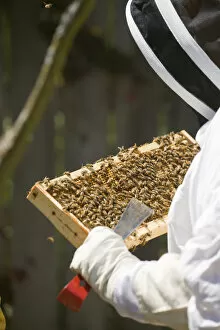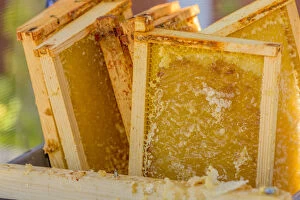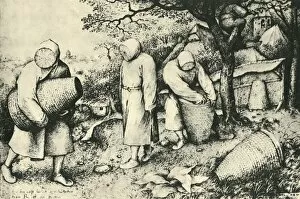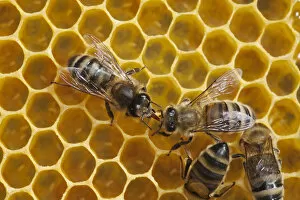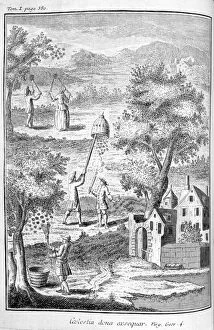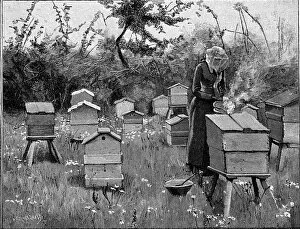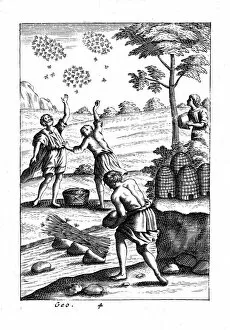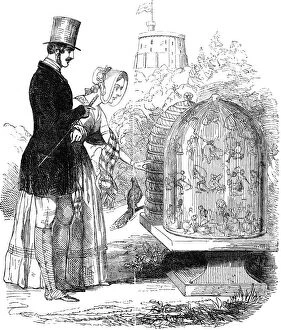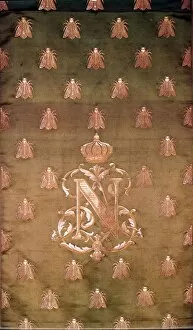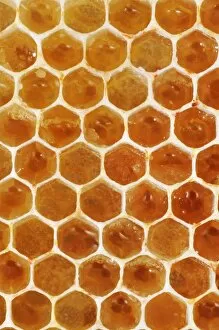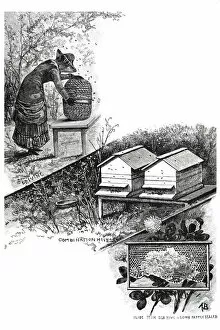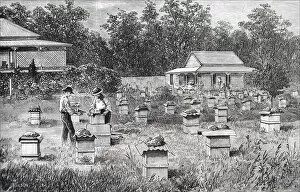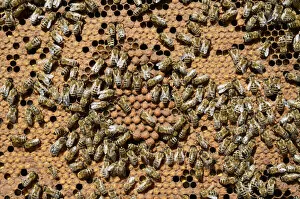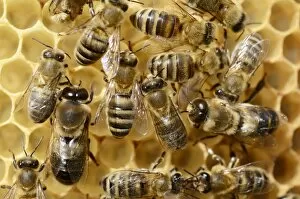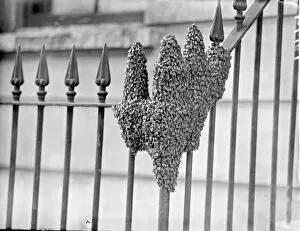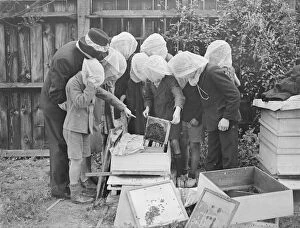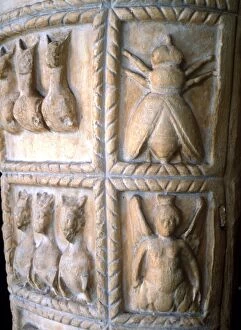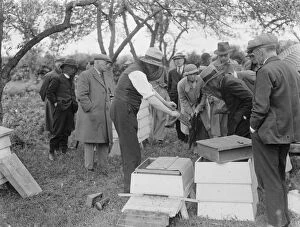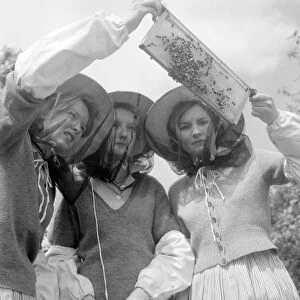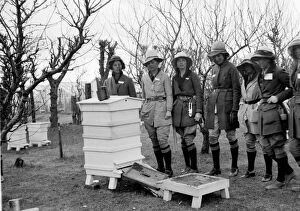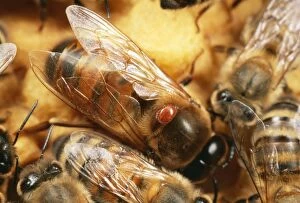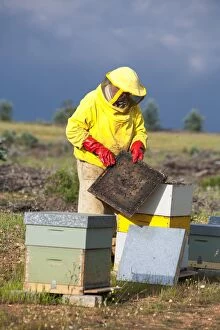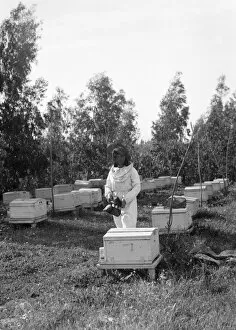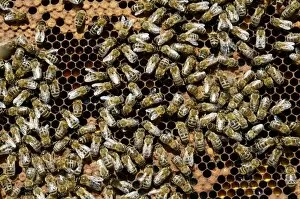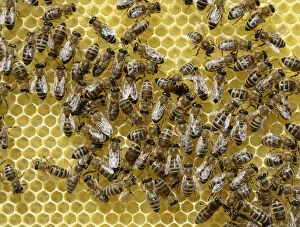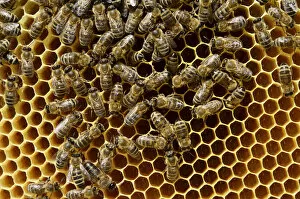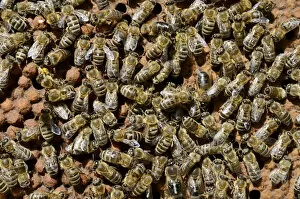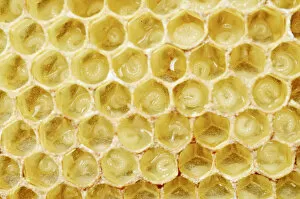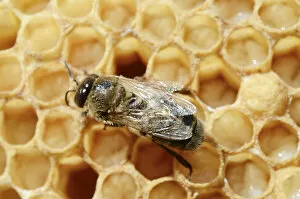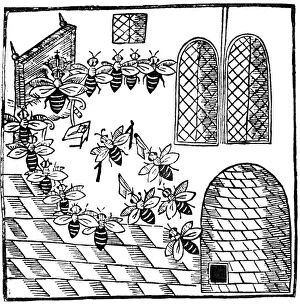Beekeeping Collection (page 4)
"Beekeeping: A Fascinating Journey into the World of Honey Bees" Discover the captivating world of beekeeping
For sale as Licensed Images
Choose your image, Select your licence and Download the media
"Beekeeping: A Fascinating Journey into the World of Honey Bees" Discover the captivating world of beekeeping, where nature's tiny wonders thrive and create a sweet symphony. 🐝🍯 Witness the intricate dance of life as Queen Honey Bee reigns over her devoted workers on a comb, orchestrating their every move with grace and precision. In an unexpected twist, a swarm of bees finds solace at the foot of a pole on a bomb site in Victoria Street. Nature's resilience shines through even in the most unlikely places. Across the UK, dedicated beekeepers ensure harmony by clipping Queen Honey Bee's wings to prevent swarming. Their commitment safeguards these precious pollinators for generations to come. As winter blankets forests with its icy touch, honey bee hives stand strong amidst nature's slumber. These resilient insects brave harsh conditions together, preparing for brighter days ahead. With tender care and unwavering dedication, honey bees tend to their delicate honeycomb in enchanting British landscapes. The fruits of their labor bring us golden jars filled with liquid sunshine - pure bliss. Meet England's oldest beekeeper, 85-year-old Mr C. , whose wisdom and experience are invaluable treasures passed down through generations. His love for these buzzing creatures is truly inspiring. Witness worker bees in panic formation on a comb adorned with precious eggs - Apis mellifera var carnica showcasing both beauty and urgency within this bustling hive society. Travel back in time to Victorian-era beekeepers who embraced this ancient craft long before it became trendy. Their knowledge laid foundations that continue to shape modern practices today. Step into folklore as we unravel "Telling the Bees, " an age-old tradition where keepers would inform their beloved colonies about significant events such as births or deaths – honoring their connection with these remarkable creatures. In 1856, mournful rituals unfolded as beehives were draped in black cloth after devastating losses.

